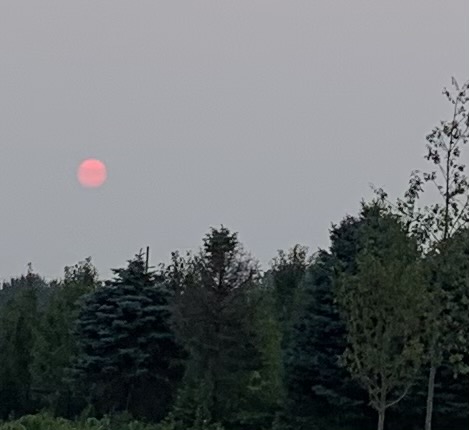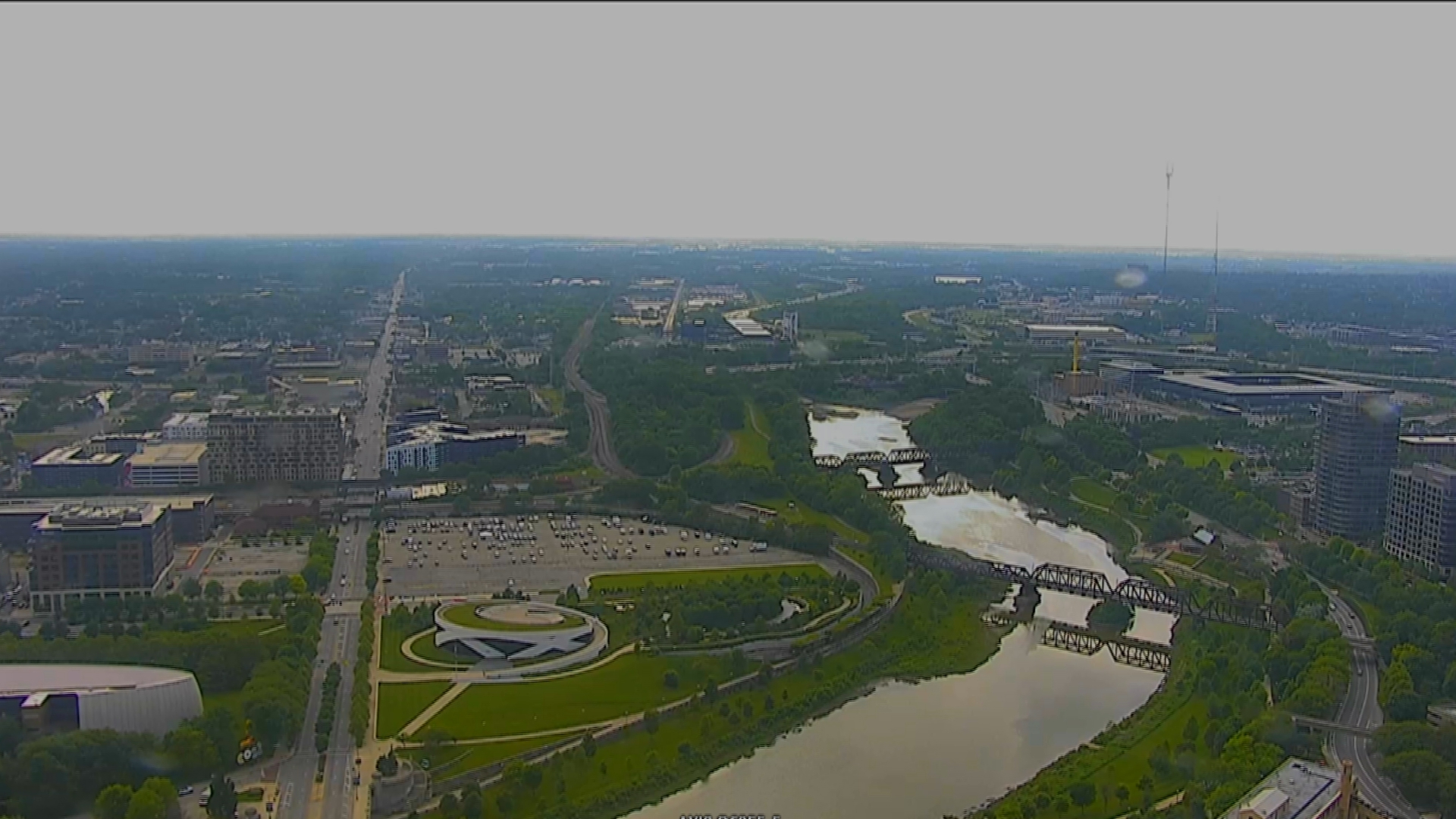COLUMBUS (WCMH) –This weekend brought vivid sunsets over parts of Ohio where the clouds broke, enhanced by a residual haze that was carried by the upper-level winds. Smoke from wildfires burning in the Western states and Canadian Prairies has followed the jet stream more than 2,500 miles to the Atlantic Coast.
The red-orange glow of the sun resulted from the longer wavelengths of sunlight that traveled through the plumes of smoke. Near the horizon around sunrise and sunset, the sun’s rays pass through a greater length of the atmosphere, where smoke particles favorably scattered the red and orange end of the visible spectrum.

More than 85 large wildfires are burning in 11 states Sunday, primarily in the Western U.S., where severe to extreme drought plagues nearly 64 percent of the region.
Dry vegetation provides tinder for fires fueled by extreme heat and prolonged, relentless drought conditions, fanned by gusty winds that have scorched more than 1.4 million acres in the American West. About 200 large wildfires have affected the Canadian Prairies.
The vast majority of these wildfires were triggered by dry lightning — thunderstorms that no longer carry ground-reaching rain due to evaporation in dry air below the cloud base. Short-term hotter weather patterns and a long-term warming trend in recent decades linked to climate change have been implicated in a megadrought in the region during the past 20 years.
The Dixie Fire in Northern California continued a pattern of merging fires, scorching close to 300 square miles of brush and woodlands. The fire began on July 14. Another blaze south of Lake Tahoe (Tamarack fire) was triggered by lightning on July 4.
The Bootleg Fire in Oregon, about 300 miles southeast of Portland, is 46 percent contained, now that winds have subsided, after consuming 640 square miles. Nearly 70 homes (mostly cabins) have been destroyed, and 2,000 homes were ordered evacuated, with another 5,000 potentially threatened by the wildfire. More than 2,200 firefighters worked on containment lines on the edge of thick woods.
Air quality worsened as far east as the Ohio Valley and Mid-Atlantic cities, where fine particulate matter reached closer to the surface, turning skies hazy. Health alerts were issued for people with medical conditions susceptible to smoke pollution along with other particles emitted by power plants, industry, and cars.
A cold front sweeping across the the Ohio Valley and Northeast should help disperse some of the smoke particles.
In the West, pockets of rain and thunderstorms in eastern California, Nevada, Utah and Arizona associated with the Northern American Monsoon provided needed rain, but also the risk of lightning sparking more wildfires.
















